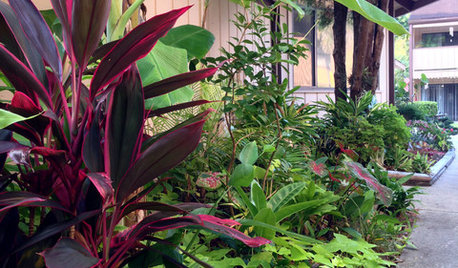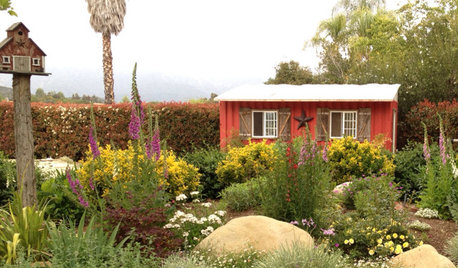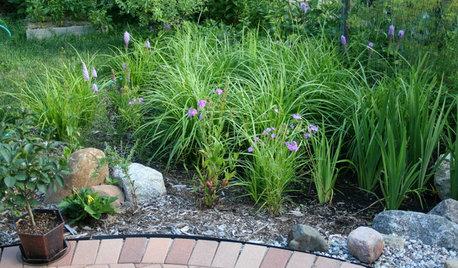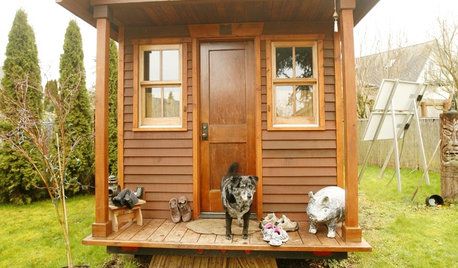found a horse manure source
indiana_veggies
14 years ago
Related Stories

GARDENING GUIDESThe Poop Scoop: Enrich Your Soil With Good Old Manure
Get over the ick factor already — this natural super-ingredient for soil has so many benefits, you'll wonder why you ever went chemical
Full Story
REMODELING GUIDESOne Guy Found a $175,000 Comic in His Wall. What Has Your Home Hidden?
Have you found a treasure, large or small, when remodeling your house? We want to see it!
Full Story
GARDENING GUIDESA Mom, a Garden and a Gift for the Neighbors
Gardening can be therapeutic in unexpected ways. See how one gardener found peace and purpose in a patch of Florida soil
Full Story
FARMHOUSESMy Houzz: Charming Converted Barn Loft Outside Nashville
A one-bedroom apartment in a former Tennessee horse stable sports chic equestrian style
Full Story
PATTERN10 Fearless Ways With Zebra
Here's how to use this exotic animal print without scaring the horses
Full Story
BOOKS8 Profound Design Books — From the Children's Section
Sometimes genius comes from empty boxes, blue horses and the powerful freedom of 'ish'
Full Story
SALVAGEReinvent It: A Shipping Container Goes a Little Bit Country
See how resourceful horse owners turned low-cost storage into a country-style barn for hay
Full Story
LANDSCAPE DESIGNHow to Site and Size a Rain Garden for Your Landscape
Installing a rain garden is an excellent way to reduce runoff and return water to its source
Full Story
SMALL SPACESLife Lessons From 10 Years of Living in 84 Square Feet
Dee Williams was looking for a richer life. She found it by moving into a very tiny house
Full Story
HISTORIC HOMESHamilton, the House!
In Upper Manhattan, explore the gracious home of Alexander Hamilton, the founding father turned Broadway star
Full Story






Kimmsr
digdirt2
Related Professionals
New Bedford Landscape Architects & Landscape Designers · West Milford Landscape Architects & Landscape Designers · Richmond Heights Landscape Architects & Landscape Designers · Walnut Landscape Architects & Landscape Designers · Manhattan Landscape Contractors · Mount Sinai Landscape Contractors · Porterville Landscape Contractors · Irvington Landscape Contractors · Fredericksburg Decks, Patios & Outdoor Enclosures · Cedar Falls Decks, Patios & Outdoor Enclosures · Fort Myers Decks, Patios & Outdoor Enclosures · Mobile Decks, Patios & Outdoor Enclosures · Rancho Palos Verdes Decks, Patios & Outdoor Enclosures · Spanaway Decks, Patios & Outdoor Enclosures · White Bear Lake Decks, Patios & Outdoor Enclosureswest9491
alphonse
Lloyd
Lloyd
indiana_veggiesOriginal Author
digdirt2
alphonse
P POD
Lloyd
abolivigail
P POD
abolivigail
P POD